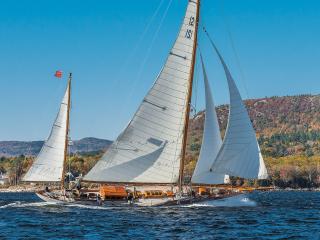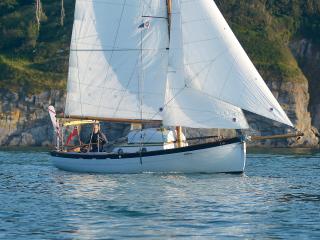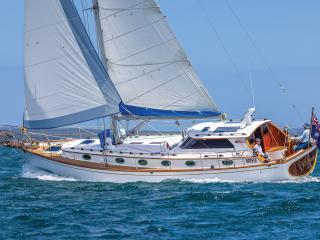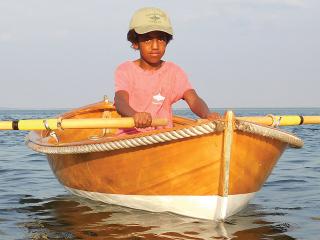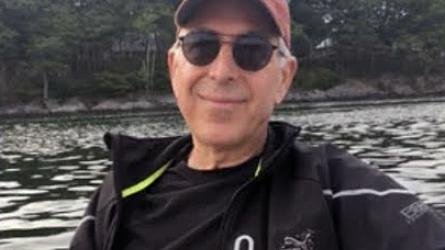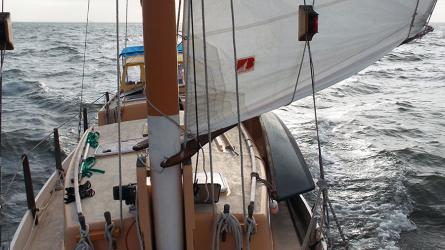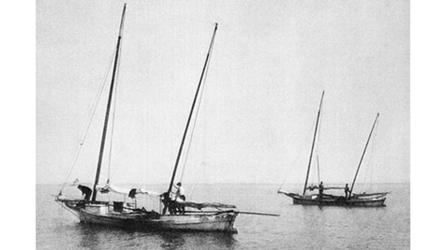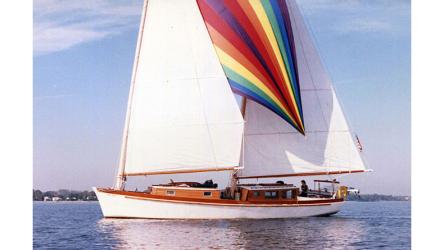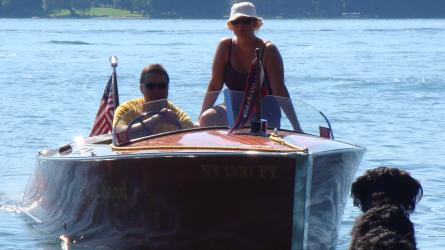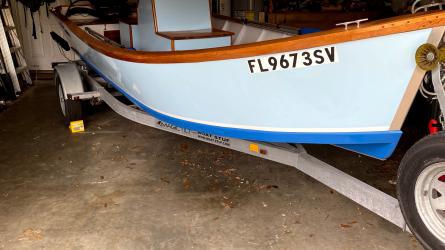May / June 2022
Building a Plywood-Epoxy Sea Bright Skiff
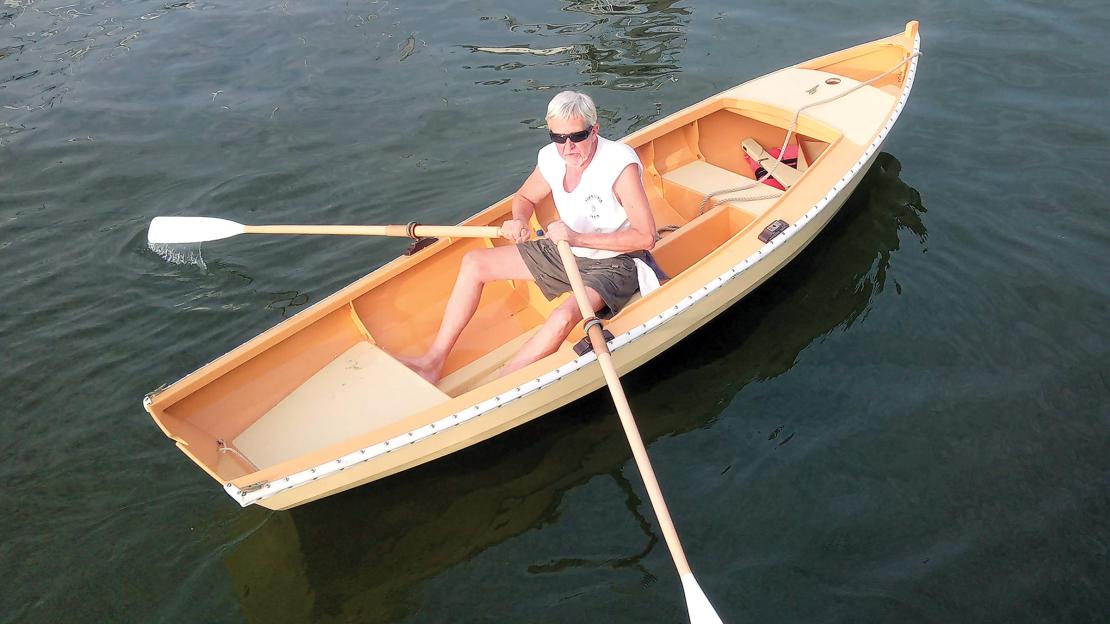
PETER MURRAY
Reuel Parker designed and built a lightweight plywood-epoxy 13' Sea Bright Skiff that could be hoisted in davits yet would be a versatile tender for his 53' cruising sailboat, a capable rowing boat, and a good sailer.
Sea Bright Skiffs evolved on the beaches of northern New Jersey during the 19th century. Originally conceived as beach-launched fishing boats, they were first recorded around 1845 at Nauvoo, near today’s Sea Bright, just south of Sandy Hook on the state’s northern shore. Their lapstrake-planked hulls were light, strong, and ideally suited to their purpose. The builders used air-dried local woods, usually northern white cedar planking over steam-bent white-oak frames, though some small boats were known to have been framed with sawn cedar roots.
The skiffs had an unusual design feature: rockered, hollow-box keels, which allowed the hulls to be easily turned around on the beach during launching and retrieval. The wide, flat keel planks assured that the skiffs would remain upright and that bilgewater would drain to a low point just forward of the sternsheets, where it could be bailed easily. Because the boats were launched and retrieved through breaking surf, they had to have hull forms that would make them light, buoyant, and stable in rough water. With the sail and sprit bundled and overhanging the transom, one man at the oars rowed out beyond the surf, where the mast was stepped and the sail unfurled. They had small centerboards but were originally steered with an oar set in a notch in the transom that was also used for sculling.
They soon became famous for their seaworthiness, especially after being adopted by beach-based lifeboat stations along the New Jersey shores, where they were lauded as the most seaworthy of all small craft. The boats were later adapted for use by pound-net fishermen, Prohibition-era rumrunners, and finally sportfishermen. The largest types gradually disappeared around the 1950s. The last builder of the original lapstrake surf boats was Charles Hankins & Sons in Lavallette, about 30 miles south of Sea Bright. On some East Coast beaches, Sea Bright Skiffs and South Jersey Beach Skiffs, albeit fiberglass versions, are still in use by lifeguards today.
To read the rest of this article:
Click the button below to log into your Digital Issue Access account.
No digital access? Subscribe or upgrade to a WoodenBoat Digital Subscription and finish reading this article as well as every article we have published for the past 50-years.
ACCESS TO EXPERIENCE
2-for-1 Print & Digital Subscription Offer
For this holiday season, WoodenBoat is offering our best buy one, get one deal ever. Subscribe with a print & digital subscription for $42.95, and we’ll give you a FREE GIFT SUBSCRIPTION to share with someone special.
1 YEAR SUBSCRIPTION (6 ISSUES)
PLUS ACCESS TO MORE THAN 300 DIGITAL BACK ISSUES
PRINT+DIGITAL $42.95
Subscribe
To read articles from previous issues, you can purchase the issue at The WoodenBoat Store link below.
 Purchase this issue from
Purchase this issue from
